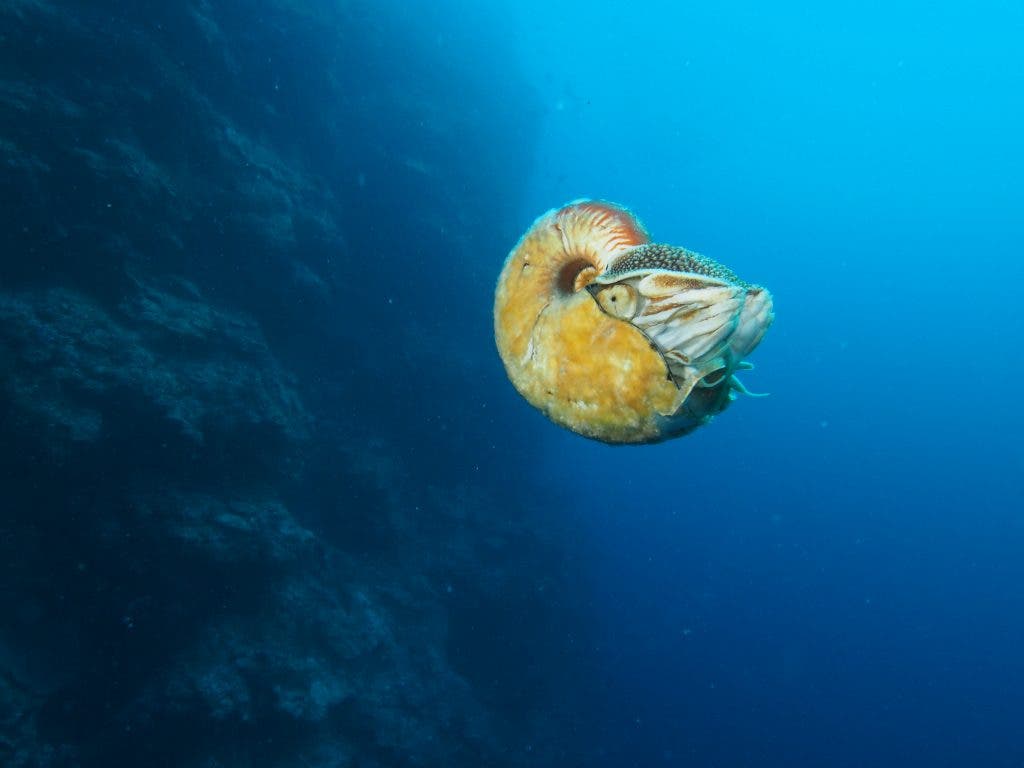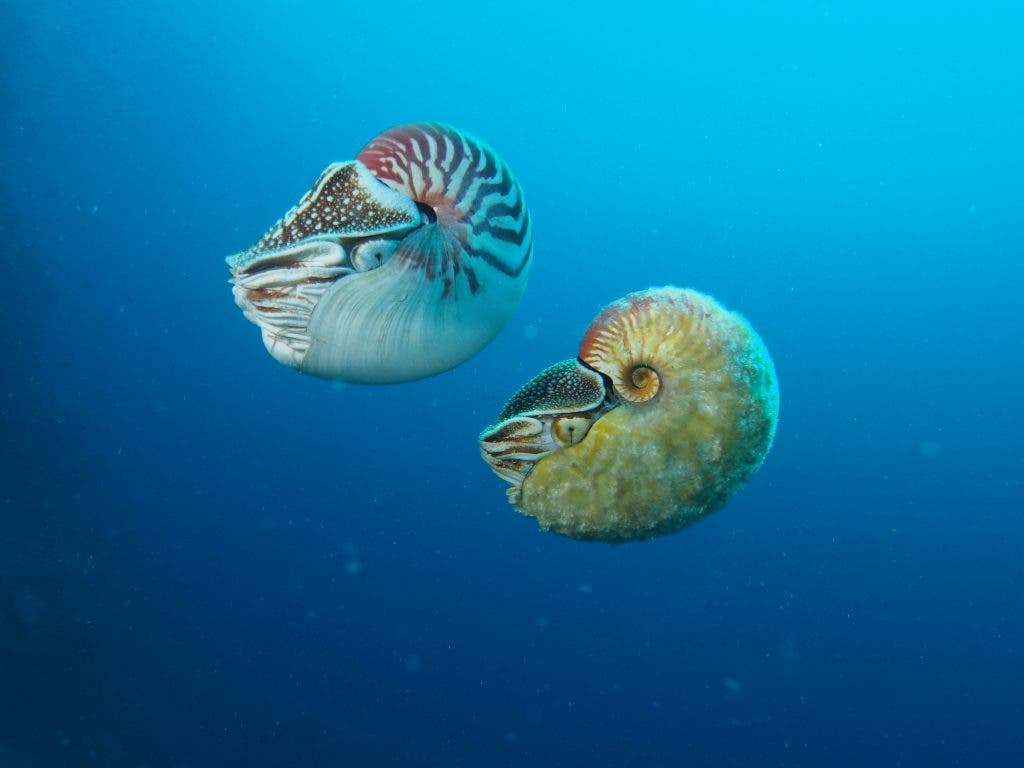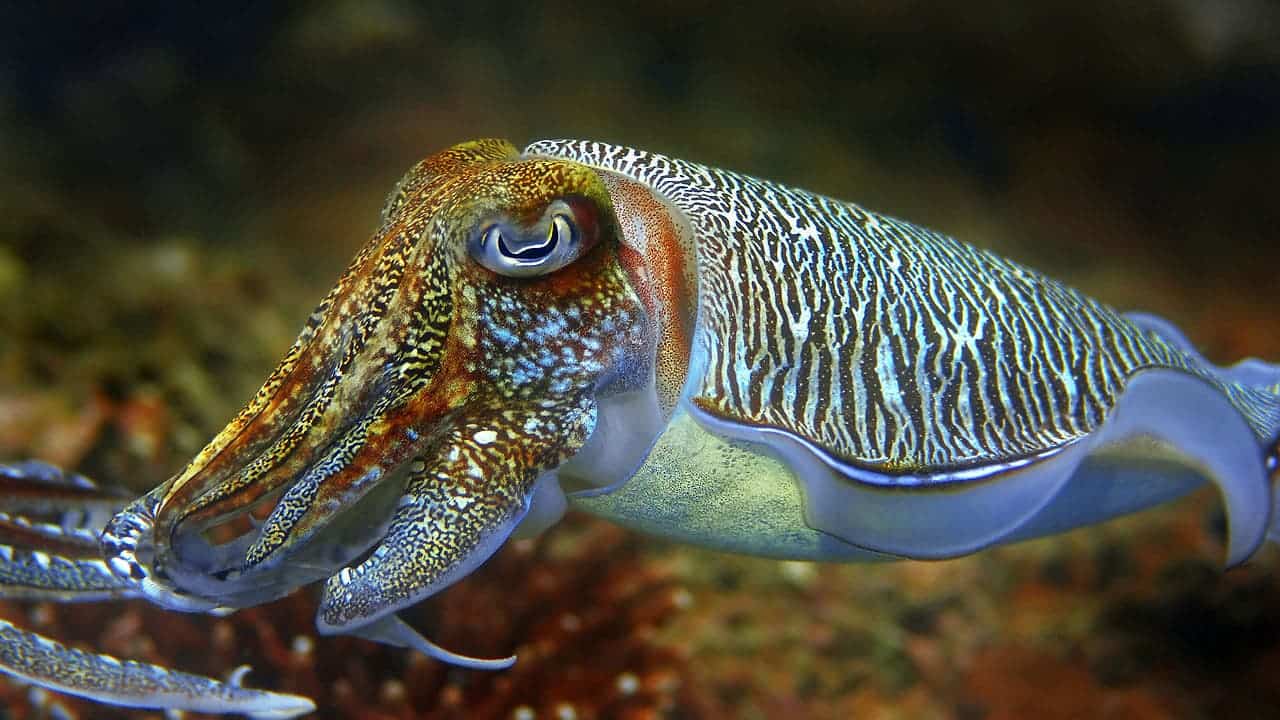Peter Ward might be the luckiest biologist ever. In 1984, he and colleague Bruce Saunders were among the first to identify a new nautilus species called Allonautilus scrobiculatus. Since then, the spiral shelled creature was only spotted once then disappeared for nearly three decades. This year, Ward returned to Papua New Guinea to survey nautilus populations and found the rare nautilus species once again!

The nautilus is a marine mollusk and a distant cousin of the squid and cuttlefish. They’re some of the most impressive creatures on Earth and one of the few classed as “living fossils”, named so because their shells are indistinguishable from those found in fossil records. They’ve been basically around for an impressive 500 million years and survived two mass extinctions. Unfortunately, the nautilus is severely threatened by nautilus mining which is driving it extinct. How peculiar that a 500 million years lineage is being driven extinct by a species that’s been around for only 100,000 years. More like embarrassing.
To survey the state of nautilus populations today, Ward and his colleagues at University of Washington submerged “bait on a stick” (meat and chicken attached to a very long pole) to depths ranging from 500 and 1,300 feet (152 and 396 meters). That’s because the nautilus can only live at a certain sweet spot. It can’t swim in warm waters, so it stays deep under water during the day and only rises to the surface to feed at night time. This makes the nautilus, particularly the elusive A. scrobiculatus, difficult to catch.
Eventually the researchers got lucky. When they scooped their bating poles, they collected several nautilus, including a A. scrobiculatus. To be on the safe side, the researchers pulled the animals out in chilled water. They then measured the specimens, collected shell and mucus samples and released them back in the water.

This sort of examination is important for biologists since it gives valuable clues as to the diversity and health of nautilus populations in the Pacific. This is how, for instance, the researchers discovered that nautiluses can only inhabit a very specific and limit ocean range. Like mentioned earlier, the nautilus doesn’t like warm water, but it can’t go too deep either since it would crack from the pressure. This means that populations are isolated and don’t venture off too much from their habitat, paving way for genetic and ecological diversity. Besides A. scrobiculatus, there are probably other undiscovered distinct nautilus species lurking through some coral in the ocean. This diversity and limited ecological niche also means that nautiluses are particularly vulnerable.
“They swim just above the bottom of wherever they are,” said Ward. “Just like submarines, they have ‘fail depths’ where they’ll die if they go too deep, and surface waters are so warm that they usually can’t go up there. Water about 2,600 feet deep is going to isolate them.”
“Once they’re gone from an area, they’re gone for good,” said Ward.
Ward is alluding of course to illegal fishing and so-called nautilus mining. In some places, this practice has decimated local populations and if left unchecked could kill off species belonging to one of the most successful lineages in history. “As it stands now, nautilus mining could cause nautiluses to go extinct,” said Ward.
As for A. scrobiculatus, Ward isn’t done with it yet.
“It’s only near this tiny island,” said Ward. “This could be the rarest animal in the world. We need to know if Allonautilus is anywhere else, and we won’t know until we go out there and look.”
Source: University of Washington



